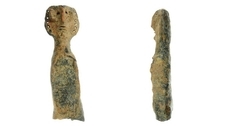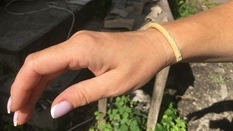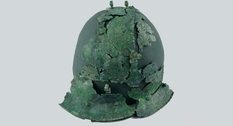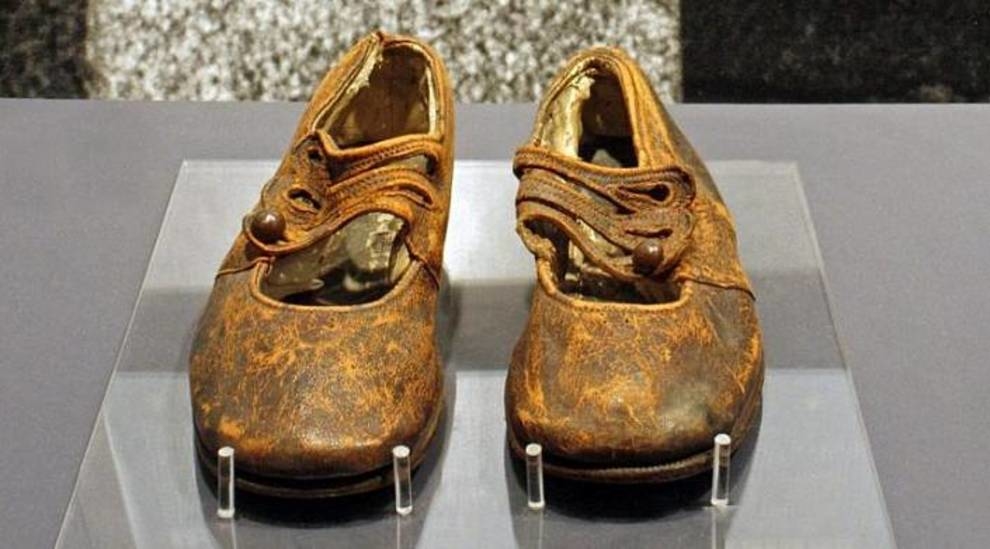
Unknown boy from “Titanic”: how could scientists find a little owner of brown shoes?
The tragic catastrophe of the British transatlantic steamship Titanic occurred on the night of April 14-15, 1912. But not all bodies were able to immediately lift out of the water. For many months after the collision of a ship with an iceberg and its flooding, personal belongings of passengers and crews, and sometimes human remains, were found at the crash site.
On April 17, 1912, the sailors of the rescue ship "Mackay Bennett" found the body of a very young boy. The team members were so shocked by this event that they not only brought the body to England, but also installed a monument on the boy’s grave for their money.
This monument still stands today on that grave of the Fairview Lawn cemetery in Halifax (Nova Scotia), where 150 more Titanic passengers are buried. The monument to the little boy is engraved: “A monument to an unknown child, whose remains were discovered after the Titanic disaster. At the request of the sailors, a metal plate with the engraving "Our Baby" was inserted into the lid of the coffin.
For a long time they could not identify this child. His description fell under the description of five more children who died during the disaster: Gilbert Danbom (5 months, Sweden), Alfred Peacock (7 months, England), Eino William Panula (13 months, Finland), Sidney Goodwin (19 months, England) and Eugene Rice (2 years, Ireland).
When things of the tragically deceased passengers began to be delivered to the USA, the authorities decided that they should be burned. After all, they could be stolen, and then sold as souvenirs, profiting from the tragedy, which is inhuman.
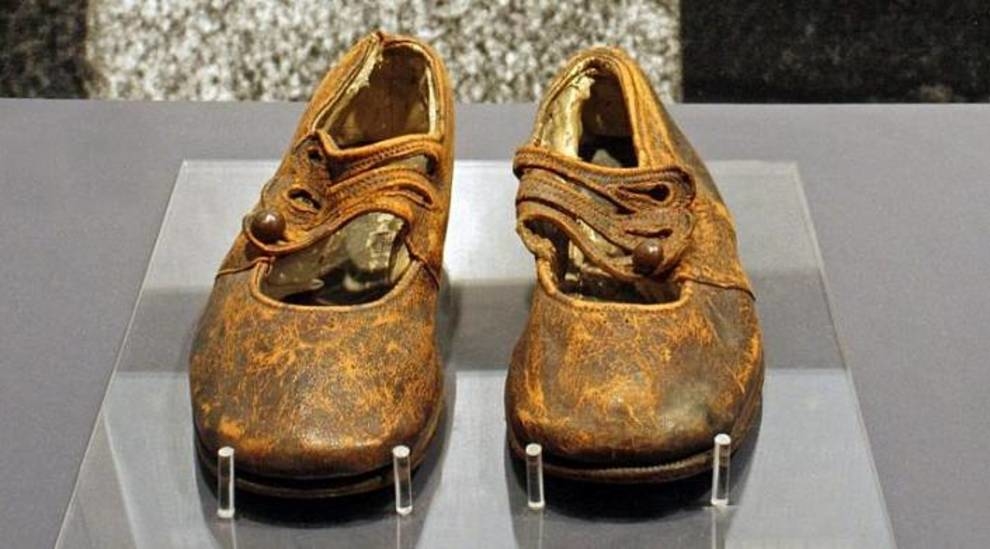
But Clarence Northover, who was a Halifax police sergeant in 1912 and helped to guard things and even the bodies of the dead, was unable to throw tiny shoes into the fire.
“We burned the clothes to stop the souvenir hunters, but I was too excited when I saw a small pair of brown leather shoes about fourteen centimeters long. I realized that I could not burn them. So he simply took it and put it in the drawer of his desk, hoping that once the relatives of the child to whom they belonged would be found,” Clarence said.
For almost 6 years, the shoes were kept by the police sergeant. But even after his resignation, he did not cease to keep them. In 2002, many years after the death of Clarence, his grandson handed his shoes to the Atlantic Maritime Museum in Halifax.
Shortly before that, Canadian scientists - Dr. Ryan Parr from the University of Lakehead in Ontario and the historian Alan Ruffman from Halifax, decided to identify the boy who was found by the sailors. In 2001, they obtained permission from the authorities to exhume the child. The samples with which scientists had to work were a small piece of bone and three tiny teeth.
While Dr. Parr was working in the DNA identification lab of the US Armed Forces in Maryland, Alan Raffman went on a very ambitious journey — he decided to find relatives of all five boys to take DNA samples from them. He was helped in his search by dozens of people, in the end he sometimes found the distant, but kin of each child.
As it turned out, the owner of the brown shoes was named Sidney Leslie Goodwin. This 19-month-old baby from England drowned with his entire large family, but only his body was found and buried.
On April 17, 1912, the sailors of the rescue ship "Mackay Bennett" found the body of a very young boy. The team members were so shocked by this event that they not only brought the body to England, but also installed a monument on the boy’s grave for their money.
This monument still stands today on that grave of the Fairview Lawn cemetery in Halifax (Nova Scotia), where 150 more Titanic passengers are buried. The monument to the little boy is engraved: “A monument to an unknown child, whose remains were discovered after the Titanic disaster. At the request of the sailors, a metal plate with the engraving "Our Baby" was inserted into the lid of the coffin.
For a long time they could not identify this child. His description fell under the description of five more children who died during the disaster: Gilbert Danbom (5 months, Sweden), Alfred Peacock (7 months, England), Eino William Panula (13 months, Finland), Sidney Goodwin (19 months, England) and Eugene Rice (2 years, Ireland).
When things of the tragically deceased passengers began to be delivered to the USA, the authorities decided that they should be burned. After all, they could be stolen, and then sold as souvenirs, profiting from the tragedy, which is inhuman.

Photo © izbrannoe.com
But Clarence Northover, who was a Halifax police sergeant in 1912 and helped to guard things and even the bodies of the dead, was unable to throw tiny shoes into the fire.
“We burned the clothes to stop the souvenir hunters, but I was too excited when I saw a small pair of brown leather shoes about fourteen centimeters long. I realized that I could not burn them. So he simply took it and put it in the drawer of his desk, hoping that once the relatives of the child to whom they belonged would be found,” Clarence said.
For almost 6 years, the shoes were kept by the police sergeant. But even after his resignation, he did not cease to keep them. In 2002, many years after the death of Clarence, his grandson handed his shoes to the Atlantic Maritime Museum in Halifax.
Shortly before that, Canadian scientists - Dr. Ryan Parr from the University of Lakehead in Ontario and the historian Alan Ruffman from Halifax, decided to identify the boy who was found by the sailors. In 2001, they obtained permission from the authorities to exhume the child. The samples with which scientists had to work were a small piece of bone and three tiny teeth.
While Dr. Parr was working in the DNA identification lab of the US Armed Forces in Maryland, Alan Raffman went on a very ambitious journey — he decided to find relatives of all five boys to take DNA samples from them. He was helped in his search by dozens of people, in the end he sometimes found the distant, but kin of each child.
As it turned out, the owner of the brown shoes was named Sidney Leslie Goodwin. This 19-month-old baby from England drowned with his entire large family, but only his body was found and buried.
